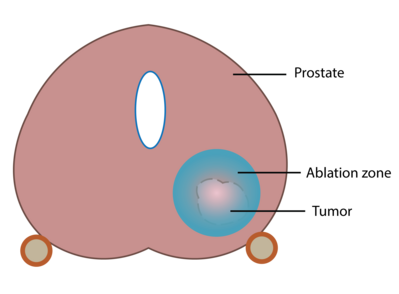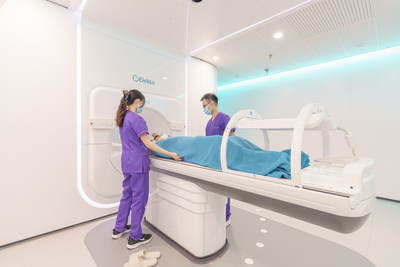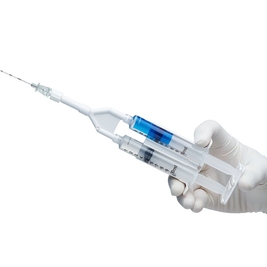Prostate Health
Advances in Prostate Cancer Treatment
Prostate HealthProstate Cancer
Curative treatment can be considered for patients with localized prostate cancer. The choice of treatment depends on patient’s age, his general condition and cancer aggressiveness. Different treatment options including robotic surgery, radiotherapy and focal therapy may be offered.

At CUHK Medical Centre, surgical robot has been installed to perform robotic surgery. Robotic surgery aims to remove the whole prostate gland and render a cure for prostate cancer patients. Prostate gland is located between the bladder and the urethra. After removal of the prostate gland, suturing is needed to reconnect the bladder neck with the urethra. In patients with more aggressive prostate cancer, lymph node dissection may also be needed. Since the prostate gland is located deep inside the pelvis, the use of robot will allow surgeons to have more precise dissection and suturing during the whole procedure.
Radiotherapy uses ionizing radiation to destroy prostate cancer cells. For men with localized prostate cancer, radiotherapy can be used alone or in combination with hormonal therapy. MR-Linac system integrates the power of high-field Magnetic Resonance Imaging (MRI) with precision radiation therapy. The capability of locating the tumours provides confidence for oncologists to place a high dose to the prostate gland. To further minimize potential rectal toxicities, transperineal injection of hydrogel can be considered before radiotherapy.
|
|
|---|
Focal therapy aims to achieve good oncological control with functional preservation. This treatment option is usually considered in patients with focal and low-risk prostate cancer. Different energy modalities such as high-intensity focused ultrasound (HIFU), cryotherapy and microwave ablation can be used for destroying the prostate tumour. After focal therapy, regular monitoring with MRI scan and prostate biopsy is needed to ensure adequate cancer control. Case selection is crucial in deciding this treatment option.

Schematic Diagram of Focal Therapy
As low-risk prostate cancer is usually slow growing, active surveillance is also a viable option. The prostate cancer status is regularly monitored by PSA blood taking, physical examination, MRI scan and repeated prostate biopsy. If there are any early signs of disease progression, curative treatment will have to be re-considered.
For patients with metastatic prostate cancer, various medical treatment such as hormonal therapy, chemotherapy and oral novel hormonal agents can be considered. In patients with low number of metastatic sites, additional radiotherapy to the prostate gland can also be considered. Transperineal injection of hydrogel may further reduce radiotherapy-related rectal toxicities.

The above are just general information about the different treatment options of prostate cancer. Patients should seek medical advice, understand the pros and cons of each treatment option before deciding on the most appropriate treatment plan.




















